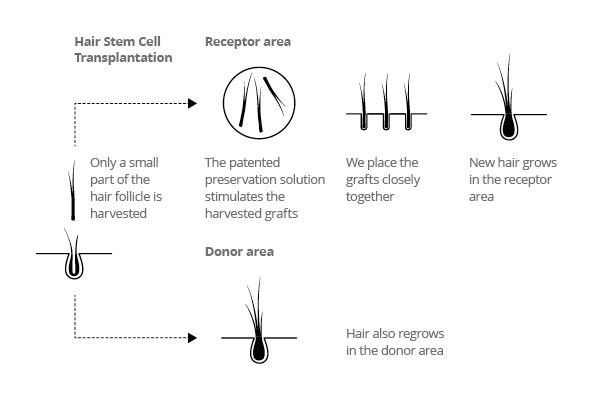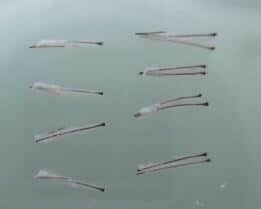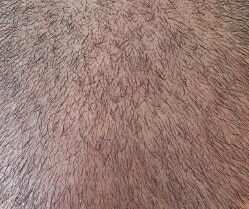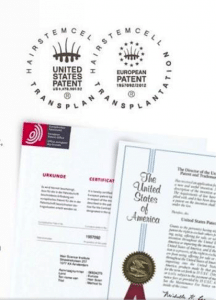STEM CELL TRANSPLANTATION
CAPILLARY GRAFT BY CELLOULES STRAIN HST IN BASEL
Hair Stem Cell Transplantation (HST) is the revolutionary hair transplantation technique that offers the best results
Hair Stem Cell Transplantation
The HST method
An innovative hair grafting technique has been exclusively in Switzerland for a few months. Holland is the place where it was born and patented by the Dutch researcher, Conradus Chosal Gho.
The name of this technique is HST which stands for Hair Stemcell Transplantation. His other name is PL FUT: Partial Longitudinal Follicular Unit Transplantation. It is commonly called Hair multiplication or technique of Dr GHO. For several years, it has been successfully practiced in the countries of northern Europe, London in Great Britain, Maastricht and Amsterdam in Holland and Paris and Cap d’Antibes in France. More than 20,000 interventions during these years constitute an important casuistic of results.
Hair Stem Cell Transplantation
The difference with traditional hair transplant techniques
It is a technique that, like FUE, applies to individual follicular units, but it differs fundamentally from FUE. This removes whole follicular units from the donor area and moves them from the collection area in the patient’s nape to the receiving area. With the HST technique, we do not collect whole follicular units, but portions of them. To do this, we use needles, called in jargon punches.
They are extremely smaller in size than even the smallest used in FUE. Their size is half a millimeter, and in fact only part of the follicular unit is taken. By taking portions of follicular units, we know that each of them contains hair stem cells. Stem cells are present in both the transplant portion and the non-sampling portion. It is from this knowledge that is derived the concept that led to the multiplication of hair. Each group of stem cells generates over time a follicular unit equal to that of origin.
A REVOLUTIONARY TECHNIQUE
The multiplication of follicular units
From a follicular unit two are born and with this principle we say that we are witnessing the multiplication of follicular units. This concept of quasi-cloning of hair/follicular units makes it possible to find a solution in the unfortunately very frequent and insoluble case of a donor area not provided or devastated by large samples that left so many voids behind them during other interventions.
It also allows to solve other situations insoluble by the techniques commonly practiced. We are talking about the restoration of great alopecia. New hair will be born from portions of transplanted follicular units and portions of follicular units left in situ, after a nine-month cycle. The follicular units will reproduce and regenerate exactly as the original. A regenerated donor area, if desired, may repeat a new procedure after a period of nine months.

VISIBLE RESULTS IN A FEW MONTHS
The results of the HST method

Donor area before follicle extraction

Grafts taken from the donor area

Detail of the recipient area 9 months after treatment
HST excluisively in hair science clinics
It is in the Hair Science Clinics that HST is practiced exclusively, under the control of doctors trained at the Hair Science Academy in Maastricht where is based the research center where this miraculous method that led to the patent was born. The samples, we said, are grafts the size of 0.5 millimeters, the size of a needle sting. The small wounds that are created with extractions have a very rapid healing process.
Hair Stem Cell Transplantation
Post evolution – operation
After two or three days, the surface of the head is healed. Without bleeding. The head of the patient will not be banded at the end of the procedure. The post-operative period does not present any particular difficulties. When the hair starts to grow after a few days, the patient will be socially presentable. Due to the extremely small size of the grafts, it becomes possible to transplant with a result of high density in the donor area, by placing the grafts very close to each other.
Transplants are thin and without tissue and will not survive after extraction. Transplants are then given energy to survive. They are immersed in a patented pharmaceutical composition that contains the extracellular matrix. The Grafts stay in this environment is at least two hours after extraction.
The regenerated donor zone
Follicular units collected in the donor area are insensitive to dihydrotestosterone and are therefore not prone to fall. Once transplanted, these portions of follicular units will give birth to hair that will not fall. The installation in the receiving area is done by creating very small housing holes.
This is where we have to insert the already revitalized levies. The hair thus reconstituted will be of natural appearance, without scarring, and of high density. HST is also used to reconstruct eyebrows and beard. Scars such as those caused by the FUT FUSS graft, also known as the strip, can be restored with this method. HST is also used in reconstructive surgery to restore skin burns, as various scientific publications attest.
The necessary pre-operative consultation
The patient must undergo a preventive trichological examination. During this visit, the capillary restoration project is defined with the patient. Often, the patient’s expectations are very high and difficult to meet with commonly practiced techniques. The consultation will allow the patient to see his condition, especially with regard to his donor area. This awareness will allow the patient to realize his real potential while, unfortunately, other unscrupulous operators allow on the contrary to consider unrealistic dreams.
The number of follicular units available is limited. The promise of miraculous results is unethical, and often this promise is made more attractive by extremely low costs. The damage that patients too often suffer from procedures performed in countries where hygiene rules are poor and by unqualified operators is difficult to repair. The patient is informed of its real potential as its donor zone allows. This finding must be linked to the area to be restored. Donor areas that have the highest potential because they have a large capital of follicular units, can allow an extraction of 4 to 6 thousand follicular units. This donor zone will no longer be able to be exploited at a later date, under pain of devastating overexploitation. In case of broad alopecia, Norwood 4 or higher, the techniques that move follicular units from one side of the head to the other, will get results of partial or incomplete restoration by disappointing the promised important expectations.
Hair Stem Cell Transplantation
Network of trichologists in the world

Telephone
+41 79 892 23 77
Where we are
hasci.swiss@gmail.com
